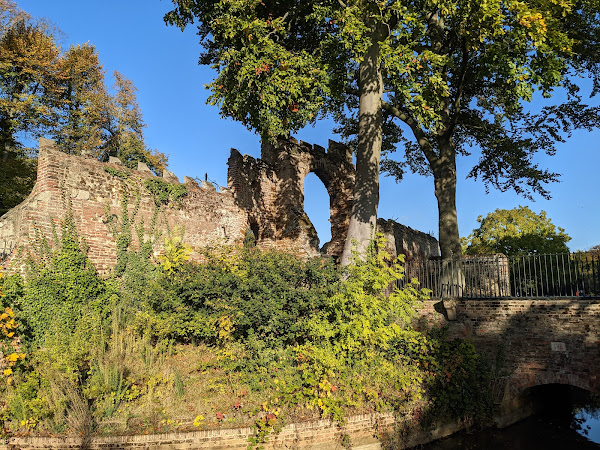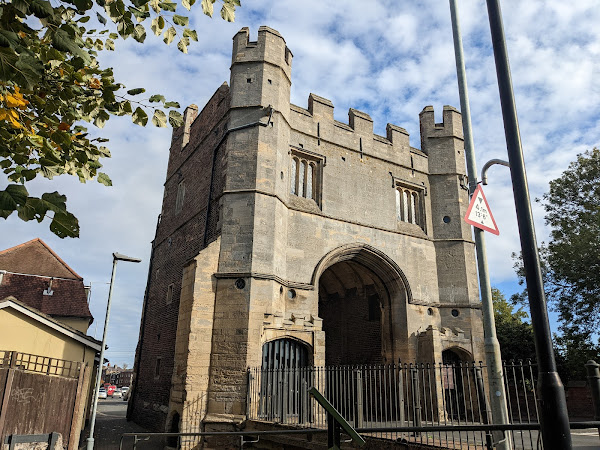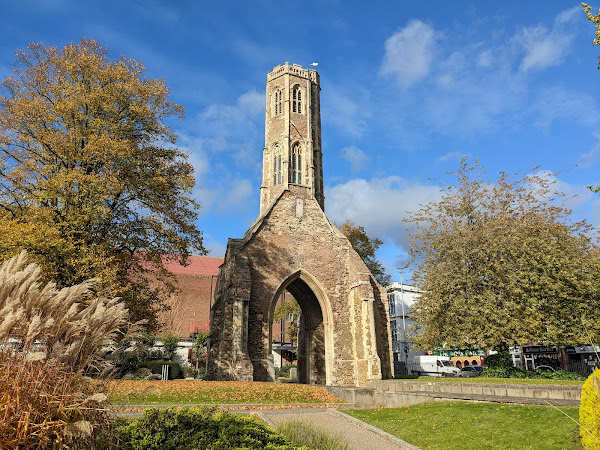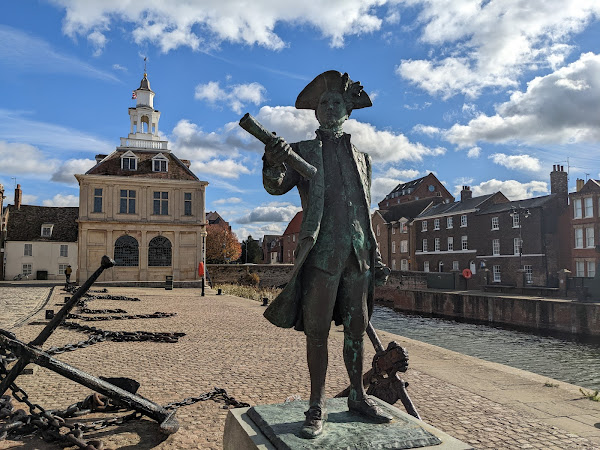Having ventured south last week, I decided that I would venture north this week, and with King's Lynn parkrun being the most northern event I haven't attended in the East of England yet, it seemed like an obvious choice!
The area
King's Lynn (or just Lynn to the locals) is a medium-sized port and market town at the mouth of The Wash; the point where the River Great Ouse meets the North Sea. The ports of Lynn where considered to be amongst the most important in England during the 14th century. While the port continued to serve a number of different industries over the centuries, the town remained important throughout, especially thanks to it's Royal connections.
The largest greenspace in the town is The Walks, which plays host to the weekly parkrun. The park was originally conceived as an escape from the hustle and bustle of the town centre; a purpose which remains true to this date.
The course
The route follows three laps of the park, following a lollipop pattern. The course is run entirely on tarmac paths, and doesn't include any significant elevation.
Free on-street parking is available to the south and east of the park, while several multi-story car parks are also located nearby. As King's Lynn is a historic town, it wasn't designed for significant amounts of traffic, and so parking can come at a premium! Toilets are located in the cafe within the park, which also serves post-run refreshments.
The run
It was pleasing to see the parkrun weather fairies were back in action today! There had been rain showers overnight, and more on the way to parkrun today, but shortly before I arrived, the rain stopped, and the sun came out!
As today's route is run entirely on tarmac, I wasn't too worried about the rain, and instead just enjoyed the scenery as I looped around the park alongside the many other runners. I had forgotten that quicker runners often lap even the 25-minute runners on 3-lap courses, so was suprised to be passed at the start of lap 3, and decided I wasn't going to try to up the pace!
Thank you to all of the volunteers for hosting a great event!
After the run
At the centre of The Walks lies Red Mount Chapel - a chapel constructed in the 15th century to house a religious relic, and provide accomodation for pilgrims traveling to the Shrine of Our Lady of Walsingham to the east, which at the time was the second most popular pilgrim destination after Canterbury.
Within the confines of the Walks, and slightly south of the Chapel, lies Guannock Gate. Built in the late 13th Century as part of the town's defences, the main brickworks remain in situe. While the gate is constructed from brick, it is thought the wider walls were likely constructed of wood or earthworks. The gate is also an active part of The Walks park, with one of the main paths passing through it (and indeed, the parkrun route passes through it on each lap)!
Venturing slightly south of The Walks, you can soon find the South Gate. Similar to Guannock Gate, the South Gate was built in 1437 as part of the town's defences, the structure served as the main entrance into the town for many years. The gate is open for explorations on certain dates between May and September each year, though that unfortunately meant it wasn't open during my visit.
Heading back into the town centre, Greyfrairs Tower sits amongst the ruins of the former friary. The Friary was constructed between the 12th and 15th centuries before falling into disrepair as the friars moved their focus elsewhere.
Memories of the town's role as a historic sea port are scattered throughout the town, including a statue of Captain George Vancouver, who chartered the Pacific coastline of what is now Vancouver, Canada.
Similar to the rabbits of Southend, a mammoth statue is located near the river, while a second is located in The Walks near to the Guannock Gate.






